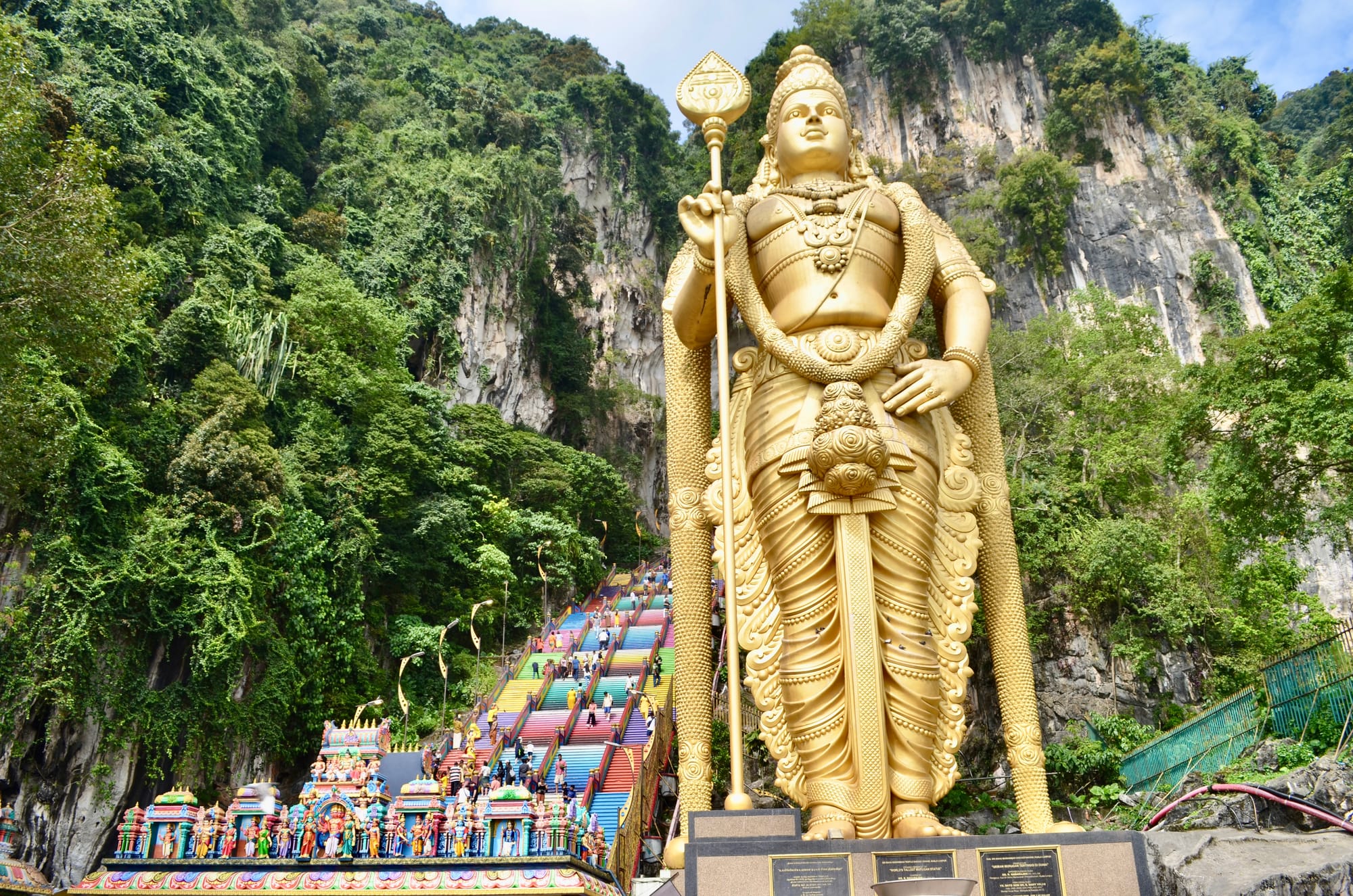The Batu Caves
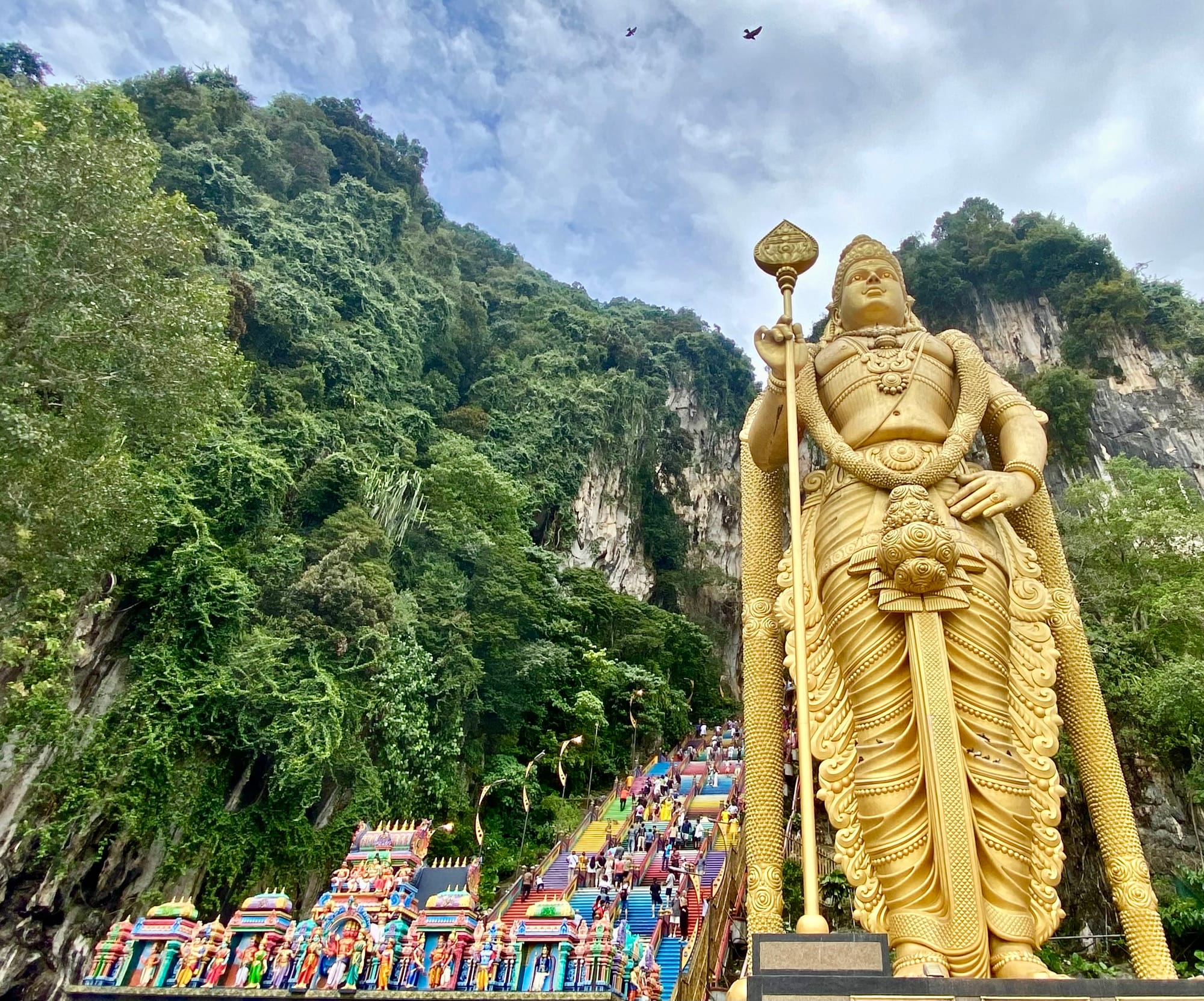
The Batu Caves are a 45-minute commuter train ride from KL Sentral. We arrive at the ticket booth only to learn that we need to purchase tickets from the booth across from where we are. And that line is about 12 people long. The train leaves in 10 minutes and won't depart, again, for another two hours. This is our only shot today. The line moves slowly as the clock ticks away. I look at D, "We're not gonna make it." The words are still lingering in the air as the two people in front of us abruptly leave the line. We're now one spot away from our purchase and 4 minutes away from the train departure. Our transaction is quick - roundtrip tickets for less than few bucks each. Then we race about 100 ft and down a set of stairs. The platform is empty but the doors to the train are still open. We jump on and are lucky to find seats together. About 60 seconds later, the doors close and we're off!
The train makes a few stops but we reach the Batu Caves within 45 minutes. It's the terminal stop so the train is fully unloaded. The arrival platform can barely support the volume of passengers and people pushing and fighting their way to the only exit. The station is in disrepair. The colors are muted and the flooring is old. When we reach the exit, we realize the reason for the long line: every person must pass through a turnstile. Not a terribly efficient design.
There are no signs for the Batu Caves but there seems to be only one logical path, so we follow the crowd. There is an iron gate separating the station from the entrance. (There is no fee to enter but some of the cave-temples do require a small payment, while others are completely free.) The iron gate has a bar at the bottom - a real tripping hazard. While I'm not always keenly aware of disability inclusion as a I travel, I do silently wonder how anyone with mobility issues or using a wheelchair would be able to enter. Generally, the Batu Caves are not disability-friendly. Lots of stairs. And walking is precarious with hurdles and obstacles throughout the grounds. There are steep steps leading to the main cave with no obvious wheelchair alternatives or blind/sight impaired supports. And the noise level and smells of mounting trash might be a bit overwhelming for persons with sensory issues or cognitive impairments.
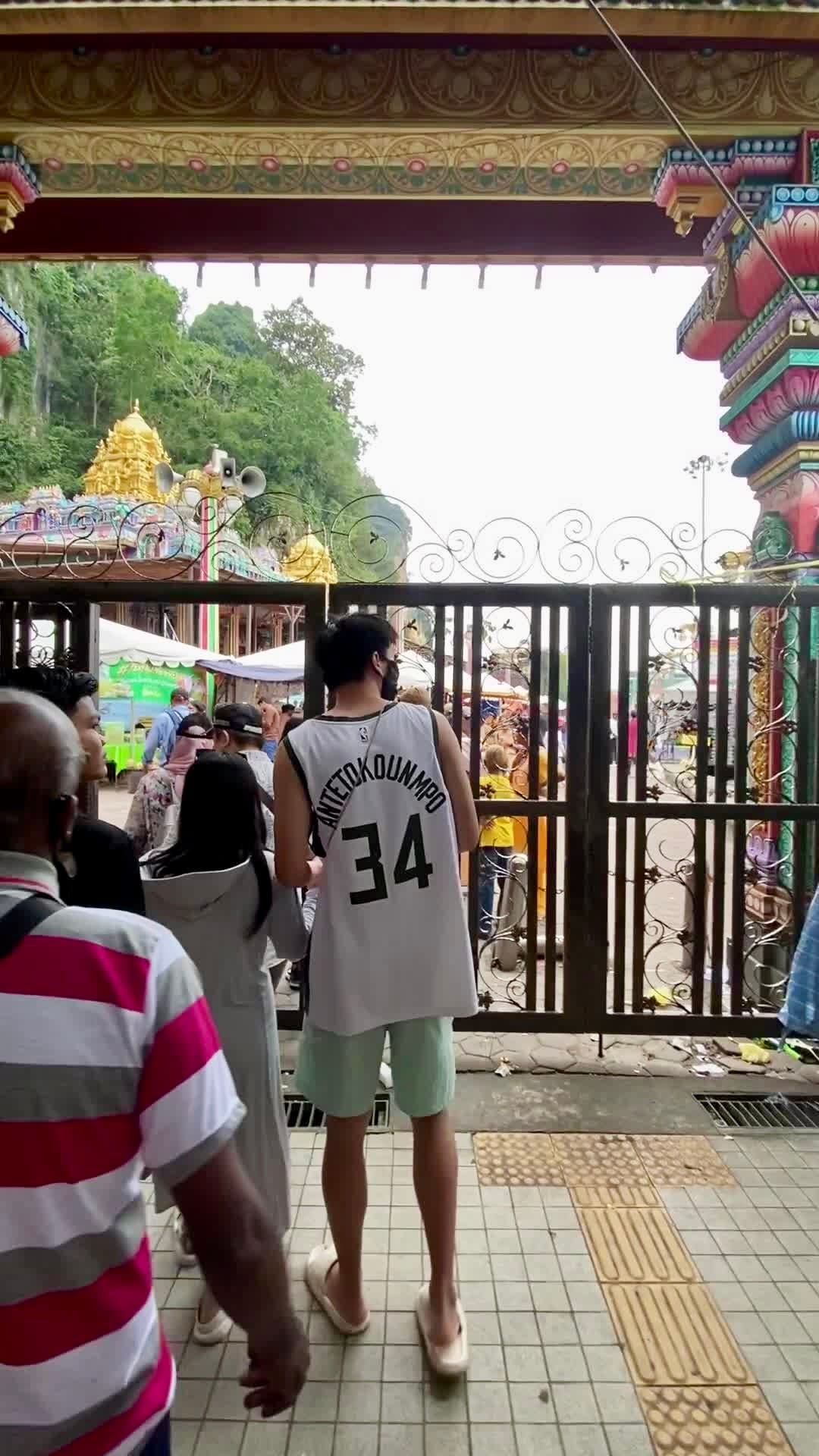
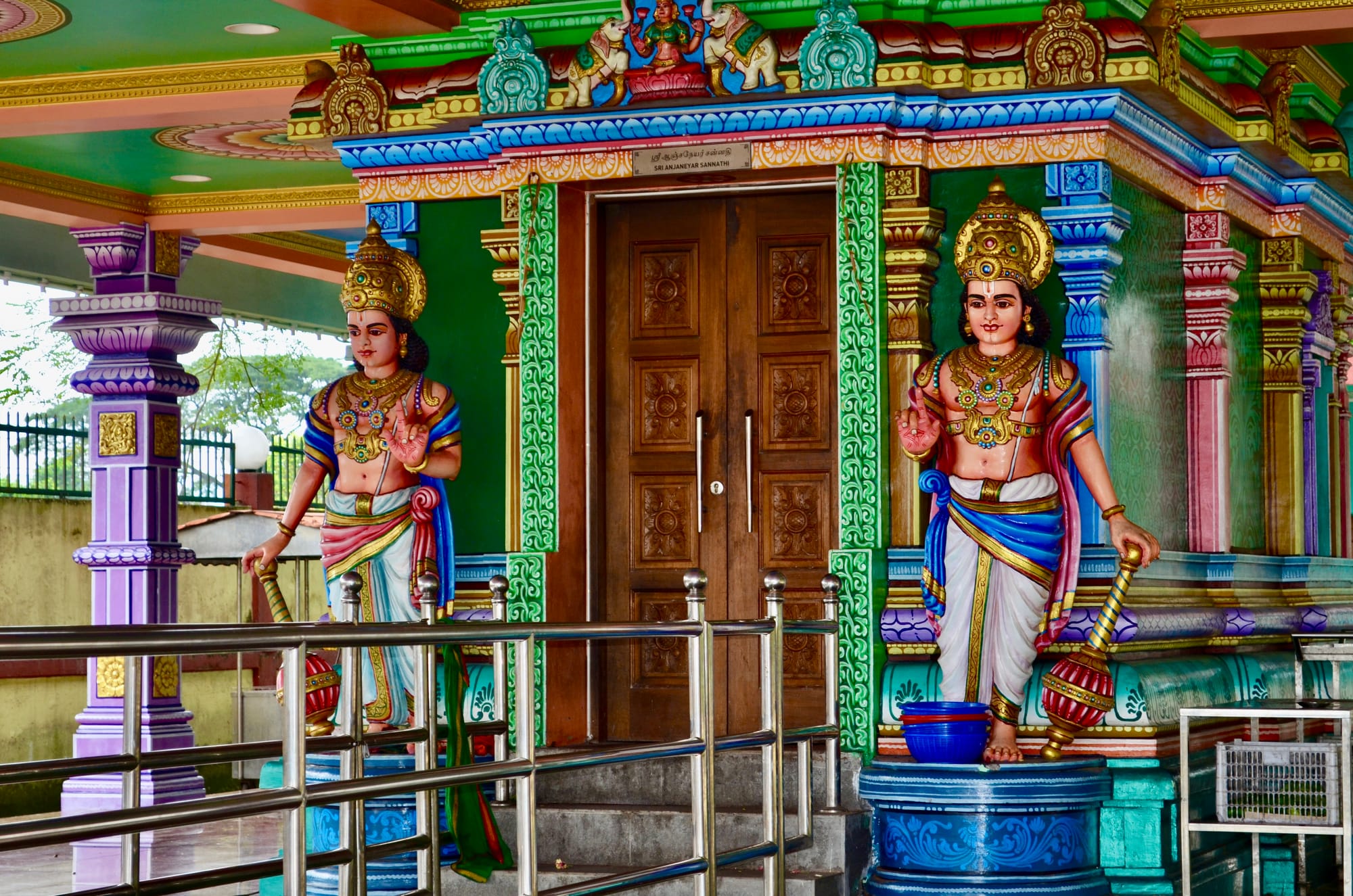
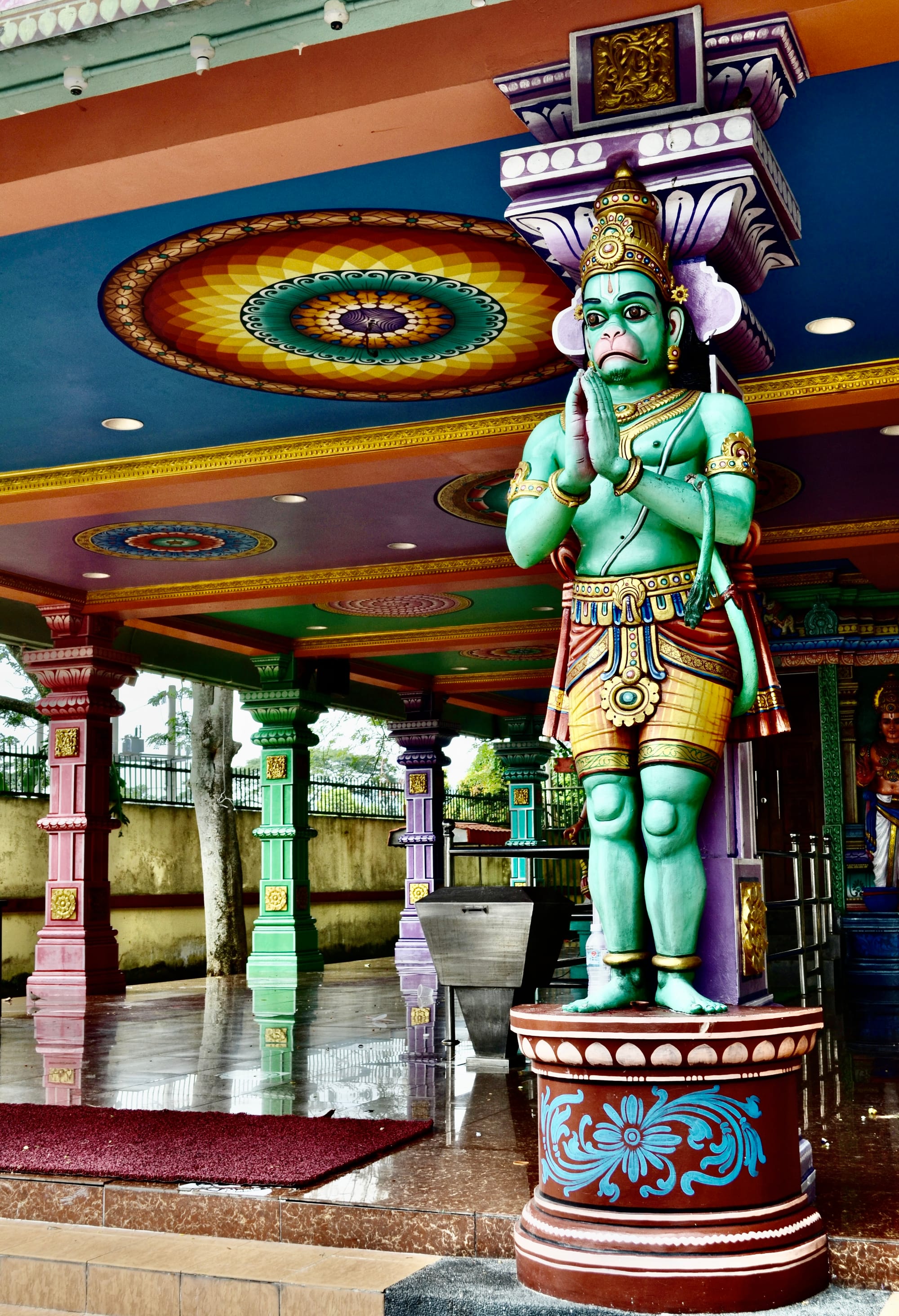
The entrance to the Batu Caves complex (l) has an iron gate with a bar along the bottom making it difficulty for persons with disabilities or parents with strollers to enter. Beautiful entrances to temples have intricate and colorful statues. (photos by kjd, January 2024)
We cross the iron gate and find ourselves completely immersed by traditional Indian foods and drinks. I'm delighted. The kiosks are endless. There are mounds of sweets and candies alongside souvenirs and tchotchkes. Vendors are flagging visitors to buy their foods or goods. The vendor stalls obstruct some of the stairs and entrances to temples inside caves. The noise is equally joyful and desperate as the sun beats down on seller's booths and prepared foods re-cook in the sunbeams. And the leftovers or wrappings of any purchased food is discard in piles throughout the stretch of food stands. The flies congregate over the waste and the odor permeates the air with an unpleasant, stale presence.
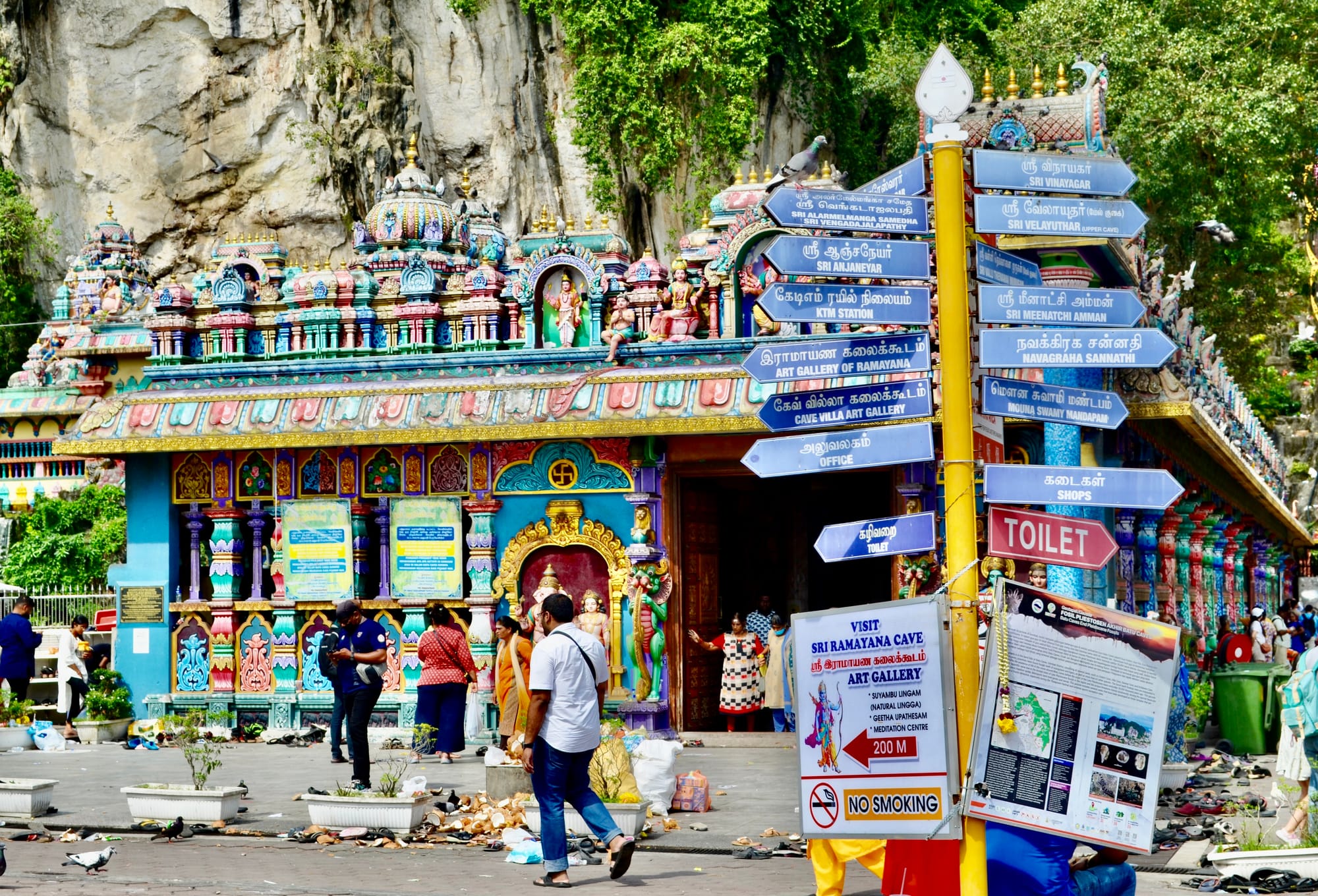
We finally reach the large courtyard and to the left of the open corridor is the Murugan Statue at the foot of the multi-colored stairs leading to the cave complex. According to Wikipedia, "the cave complex consists many Hindu temples, the popular of which is a shrine dedicated to Hindu god Murugan." The statue is formidable and winsome with a gold veneer and intricate details. Both the front and back sides are impressive and not a detail is overlooked.
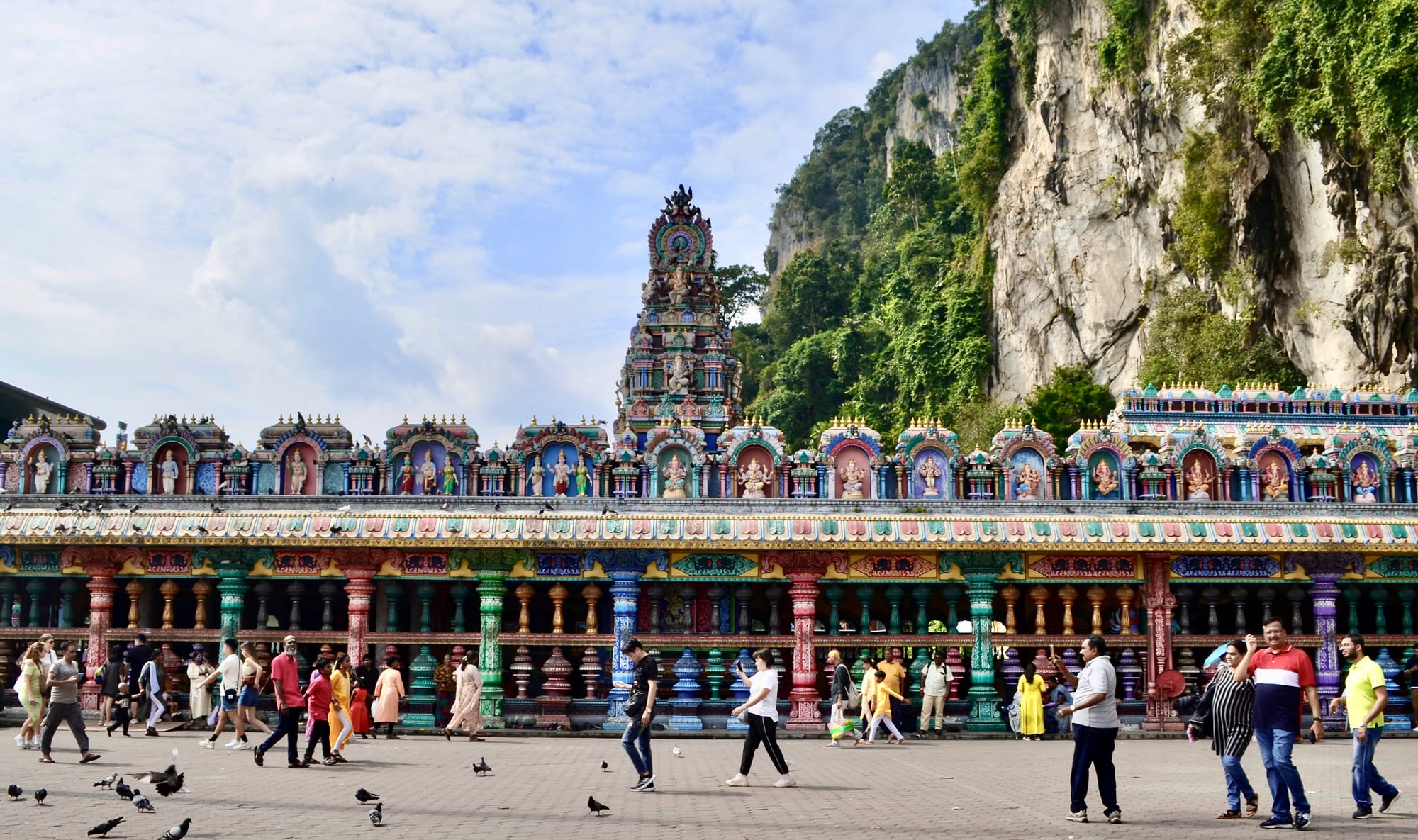
As we walk through the threshold to begin our ascent on the colorful stairs, we are greeted with piles of trash and hyper monkeys attempting to steal food or drink from visitors. The monkeys are everywhere and climb the stairs energetically as they fade into the recesses of the nearby trees. Lots of folks stop on the stairs to engage with the monkeys but the steepness also demands brief moments of rest.
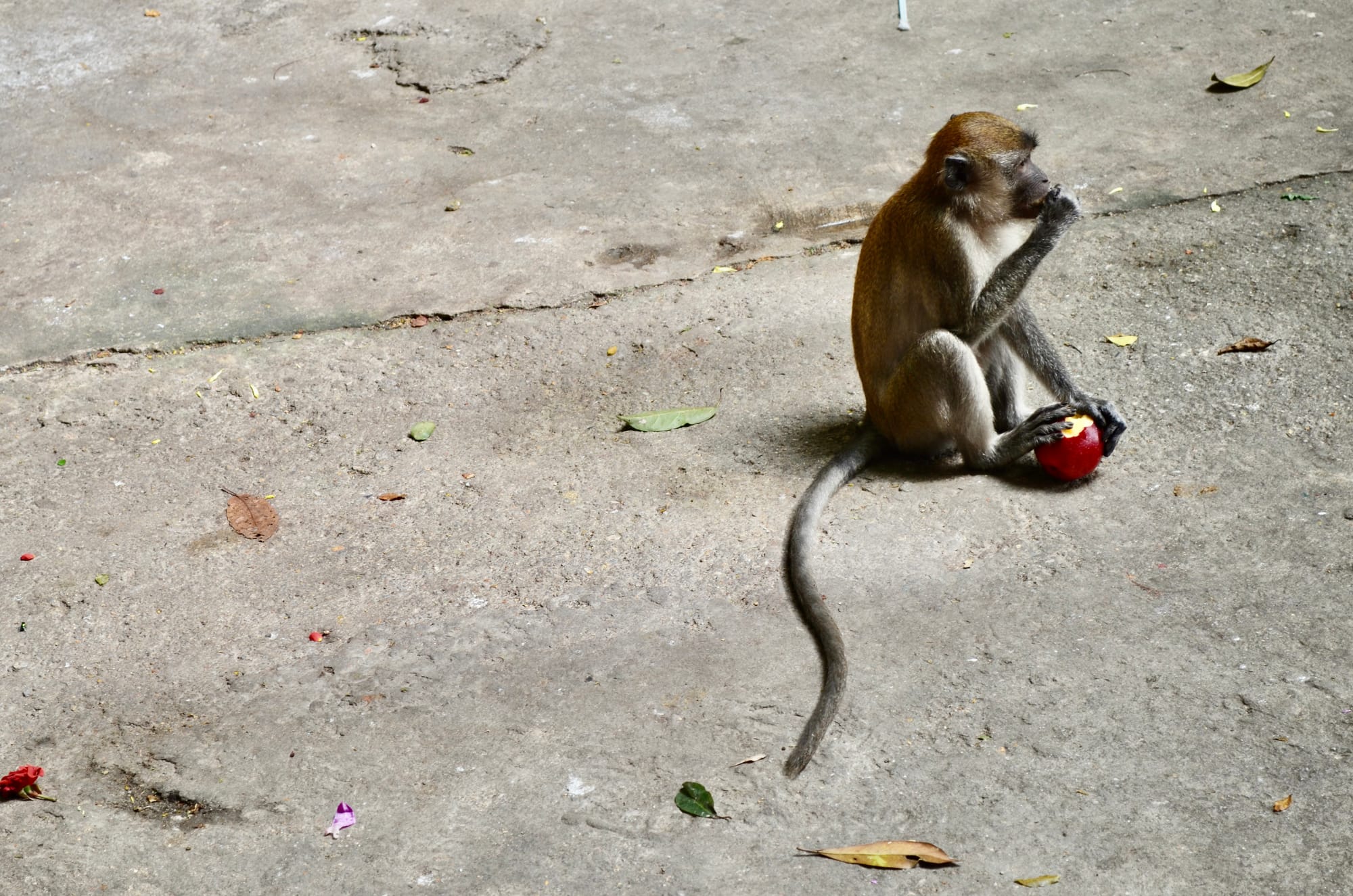
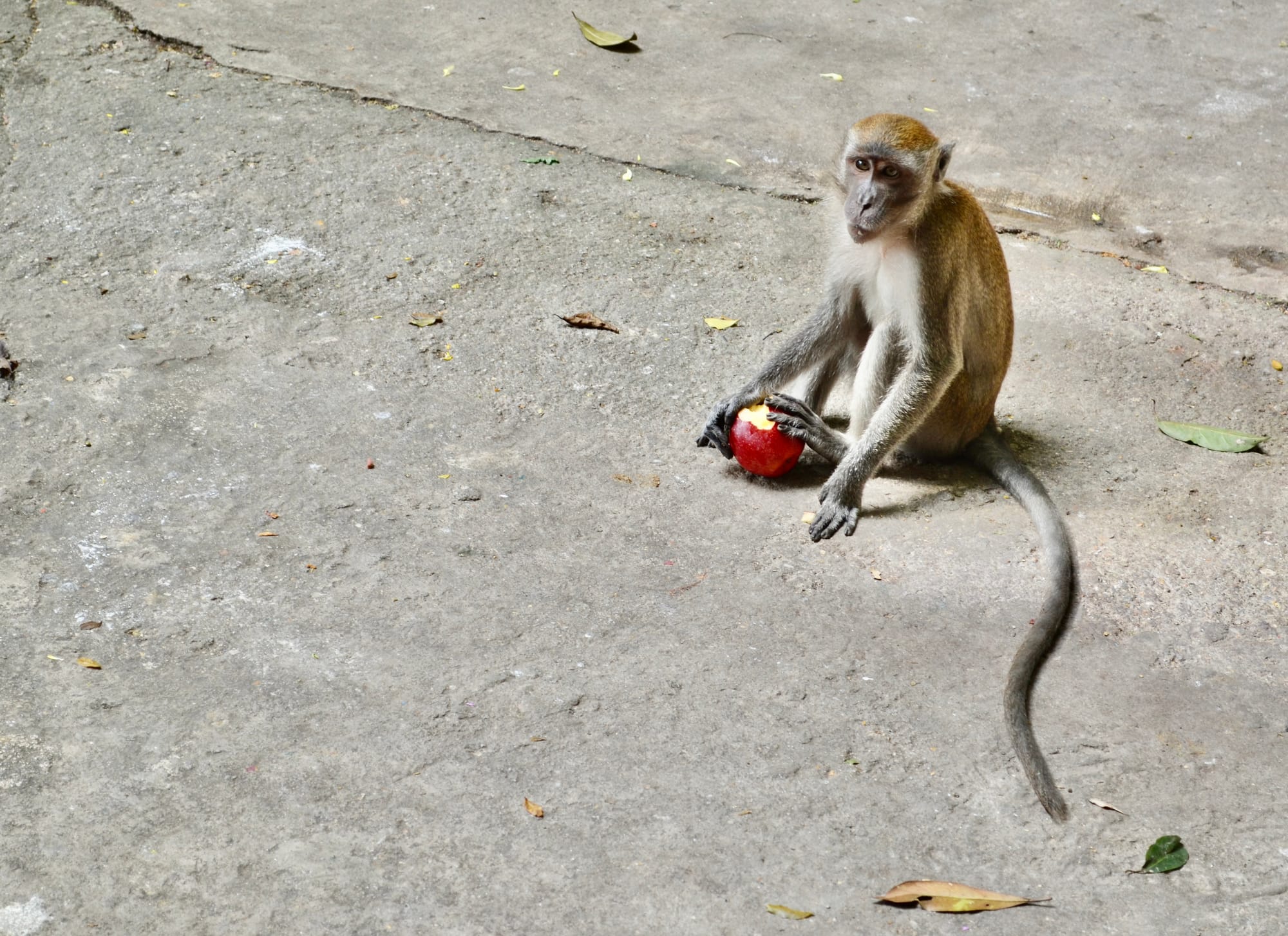
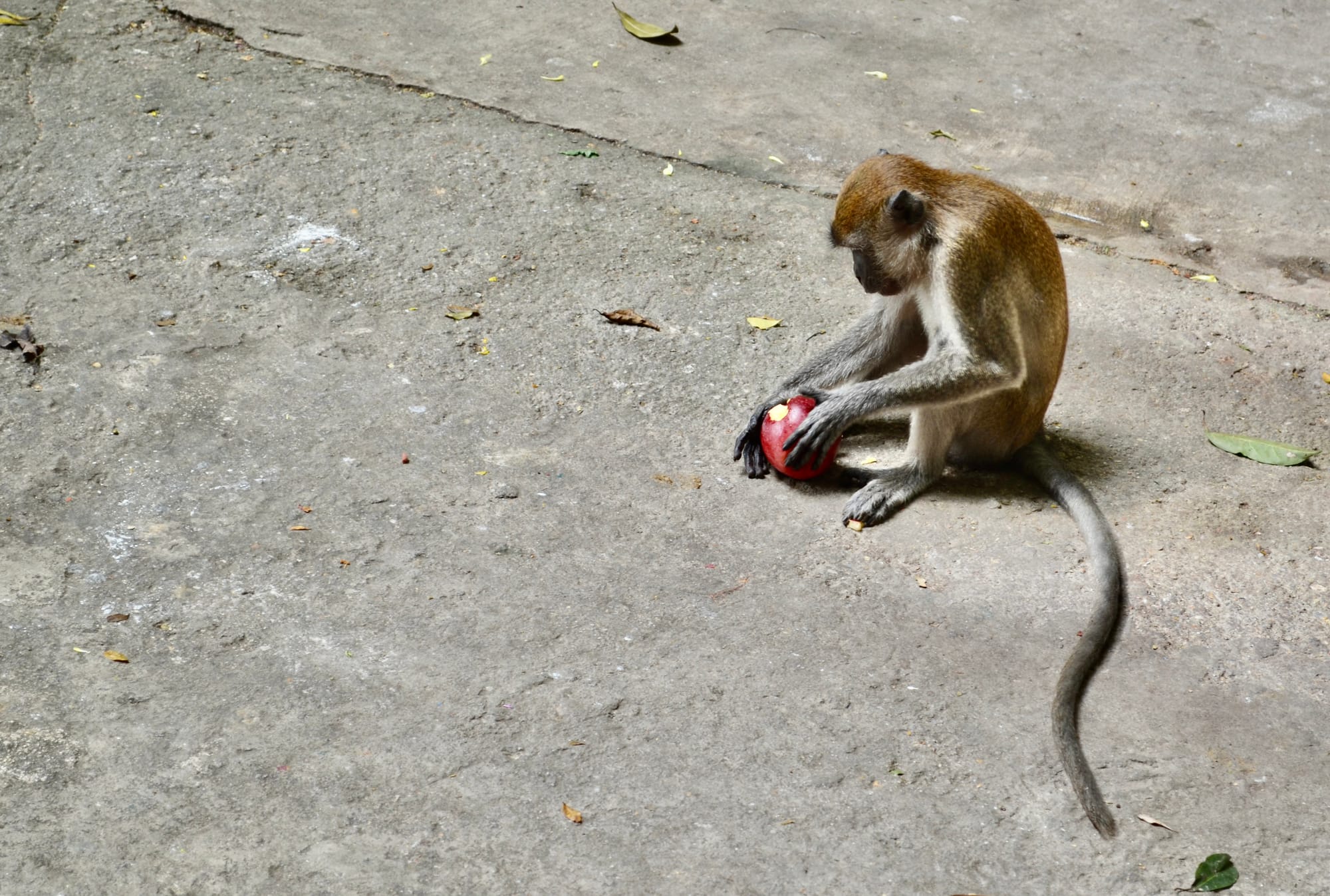
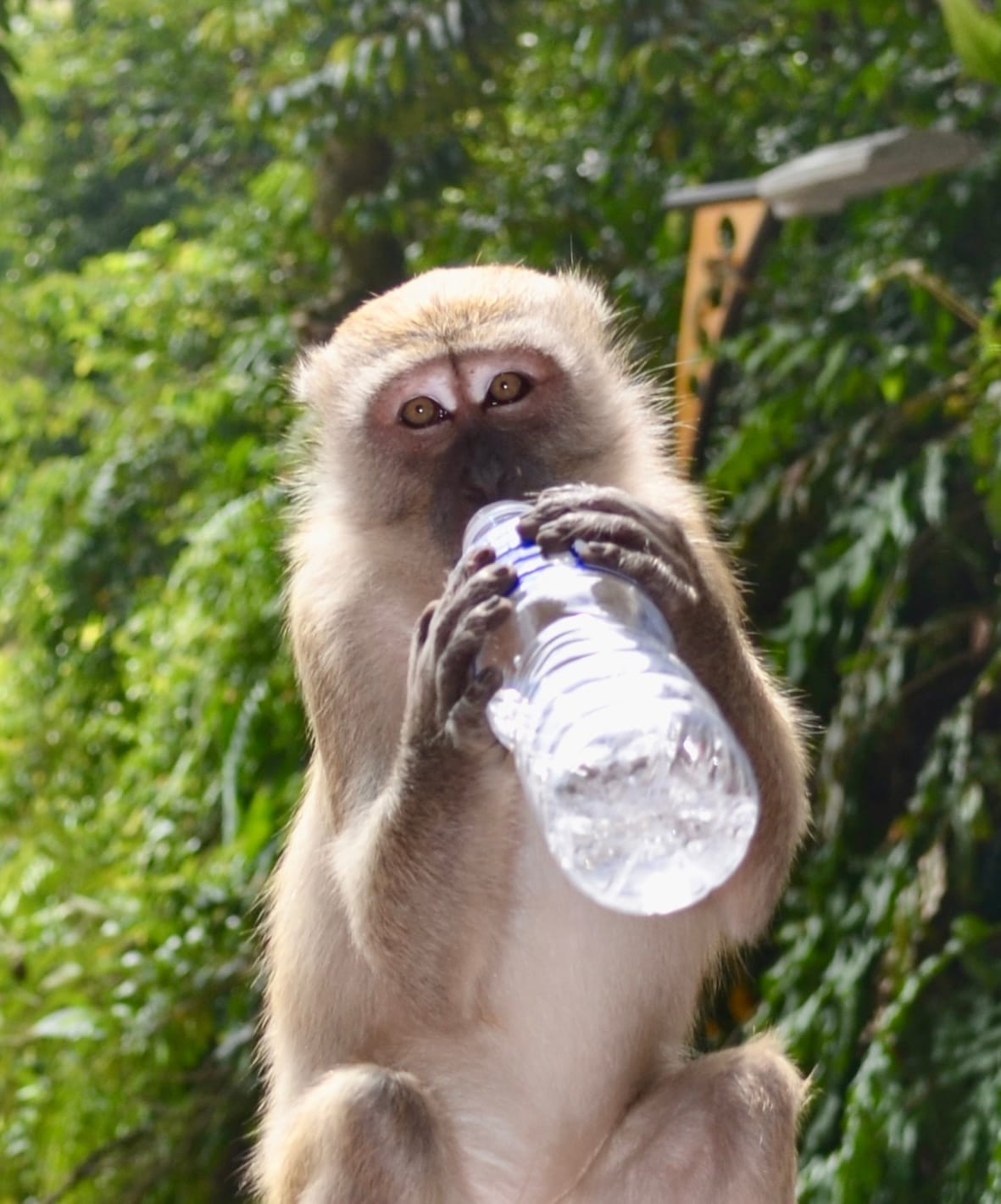
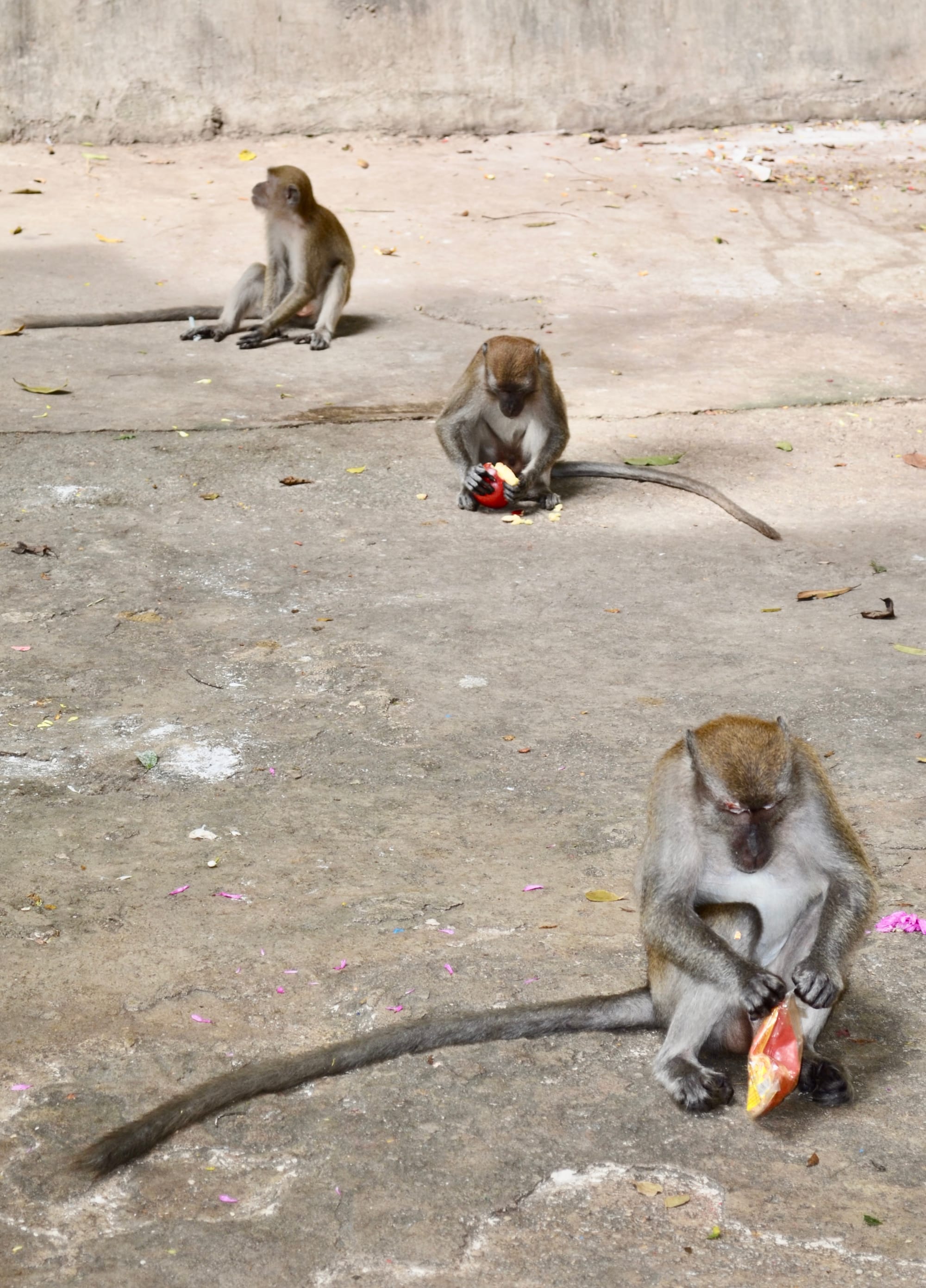
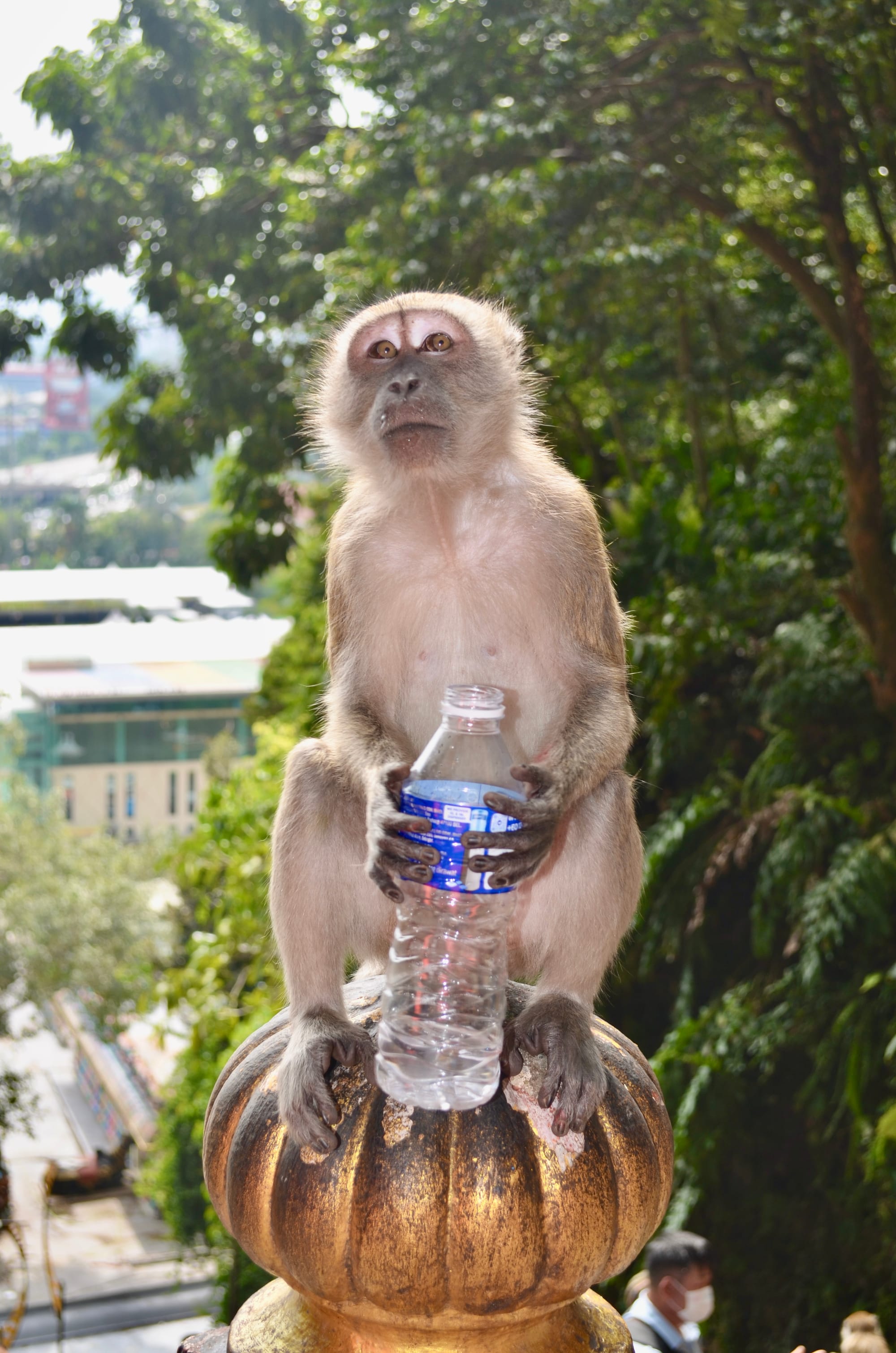
The monkeys of the Batu Caves. (photo by kjd, January 2024)
Upon entrance to the main cave, it is remarkably untidy. My first observation is that temple-goers are barefoot as they walk throughout the Batu Cave complex. A bold move, I think. I later see the signs for "no shoes" at temple entrances. I wonder to myself the reason that anyone would ruin this beautiful and sacred place by littering. And I further contemplate the reason that there are not custodians maintaining the grounds. (It's like the broken window theory - folks see junk on the ground and figure it's acceptable behavior and openly throw their rubbish.) The waste takes all forms - papers, half-eaten food, plastic water bottles. It's a little disappointing and difficult (at times) to get past the stench on this hot, humid, windless day.
As we proceed into the caves, something drips on me. Oh. My. Goodness. I try not to panic. It's just dew dripping from a stalactite. I repeat this over and over in my head, ignoring the monkeys traversing on an overhead beam. It's not monkey pee. It's not monkey pee. Please don't let it be monkey pee. I successfully trick my brain and reconcile that it's falling water. The intrigue of the cave moves me forward as I peer into the gaping holes revealing temples filled with flowers, burning candles and incense, and adorned with golden statues and other effects. Many people are there to pray, so D and I remain out of the temple out of respect; other visitors... not so much.
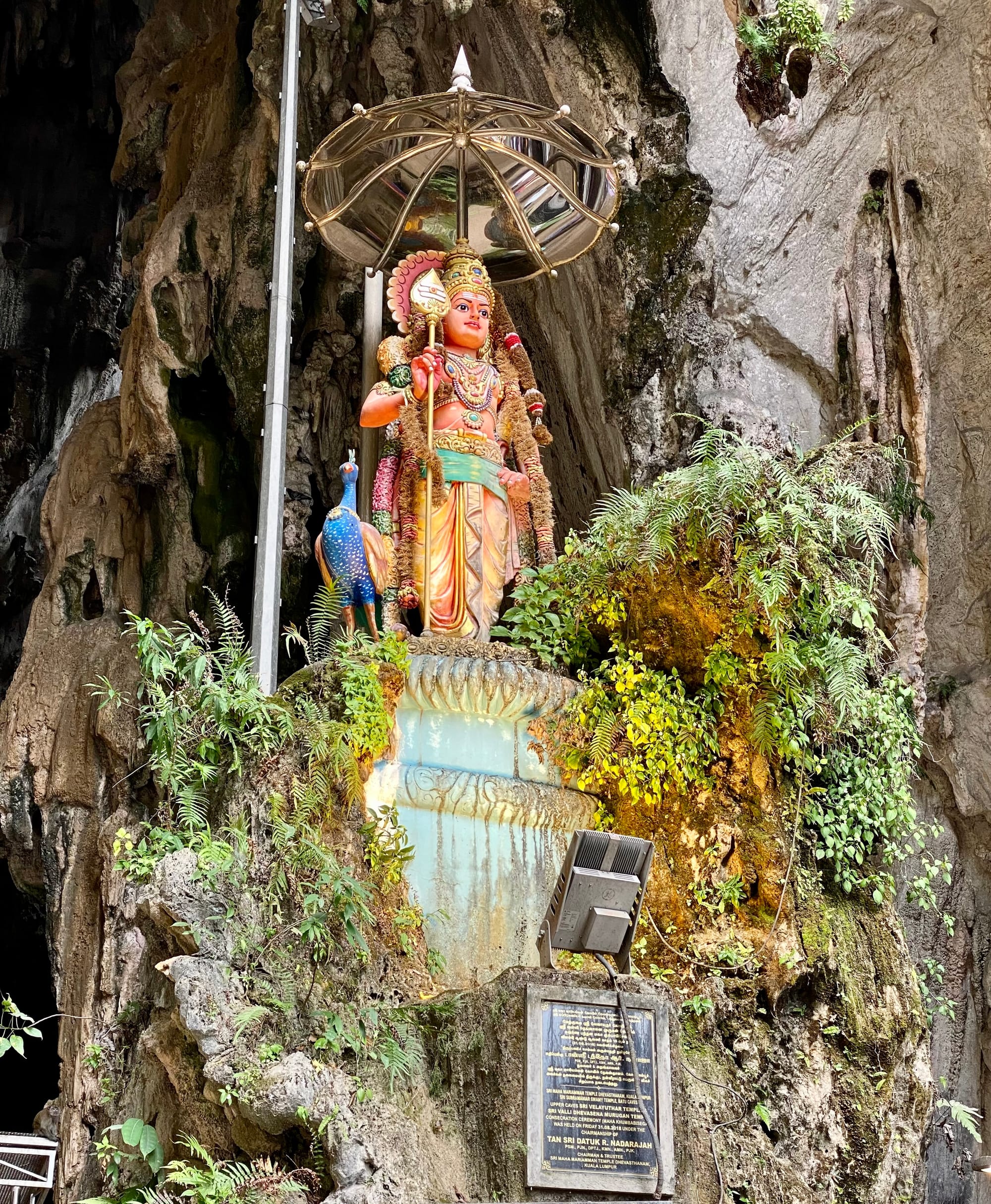
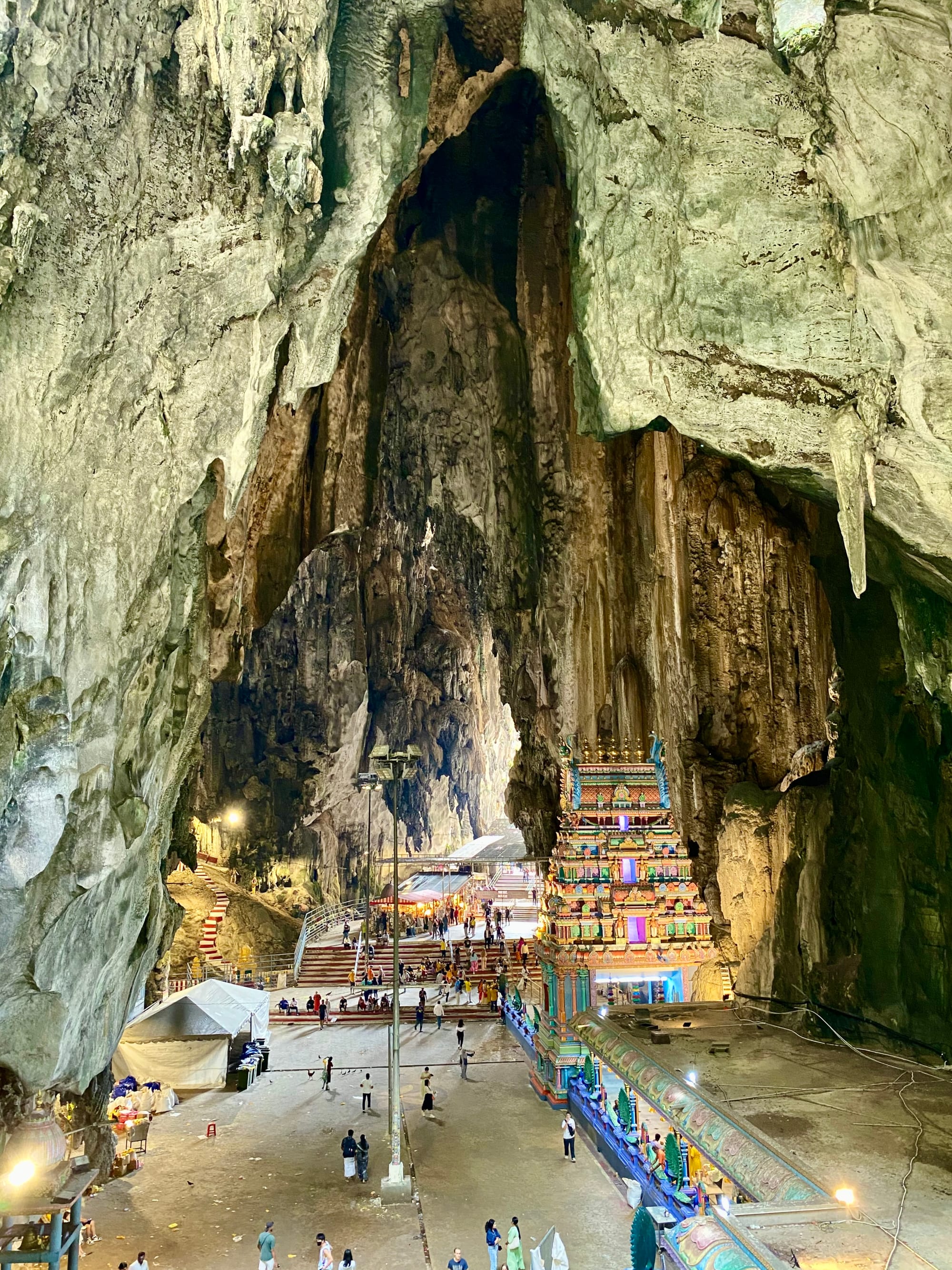
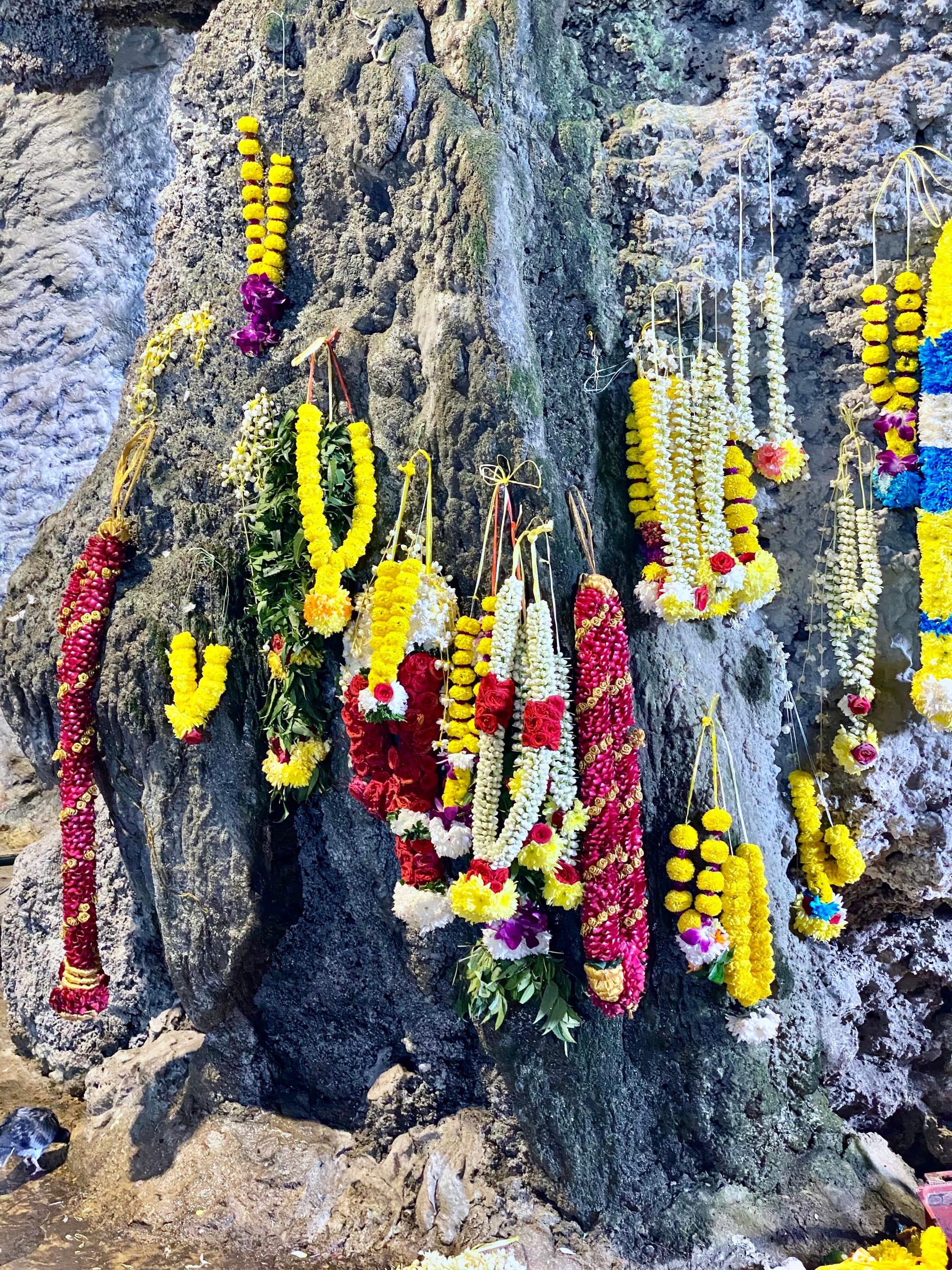
Inside the main cave (c) with vibrant, cultural statues and traditional flowers. (photos by kjd, January 2024)
It seems that the majority of people are there to actually pray at the temples. The number of "obvious foreigners" is remarkably few, and there is a real sense of beauty in the community that is drawn here. Young girls dressed in traditional yellow garb and carrying flowers to the temples. Proud parents stand by their sides as they evenly and effortlessly ascend the stairs. Men and boys who are visiting the temples are sparsely dressed, many in only loin cloths and carrying more substantial offerings to the temples. (Out of respect for worshippers, the risk of exploiting them, and the sacredness of the temples, I don't take photos.)
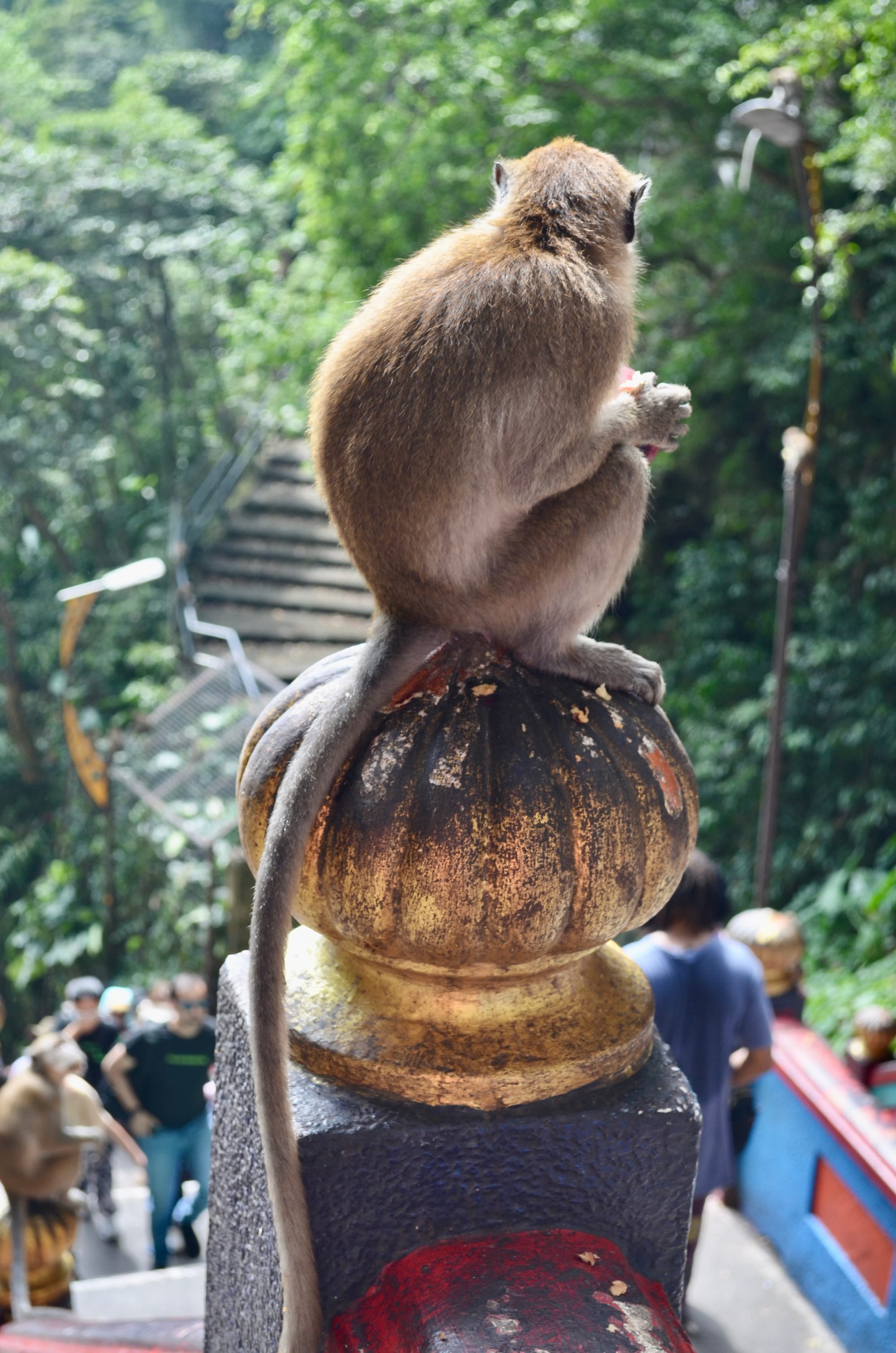
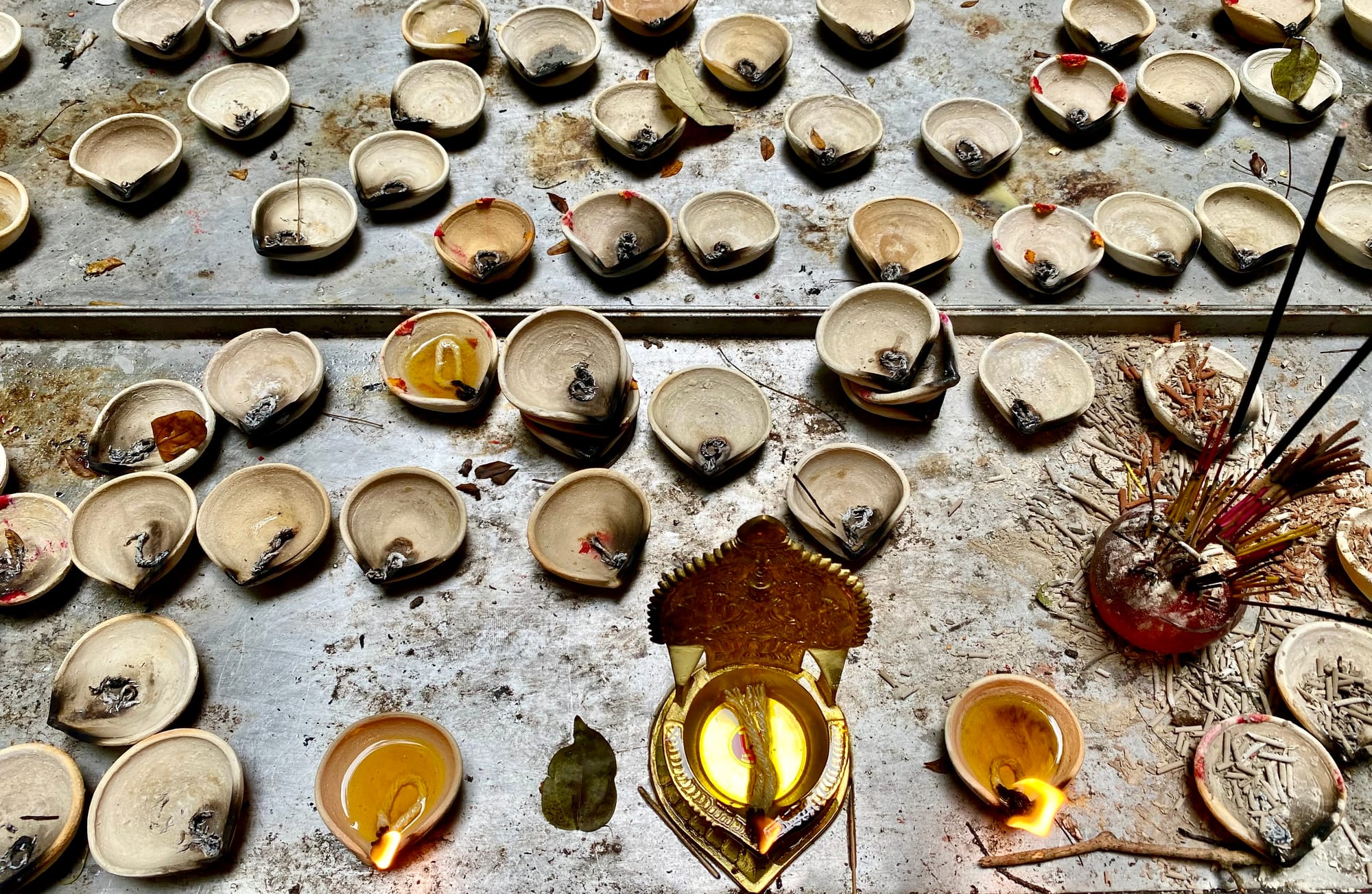
A monkey perches on the stairs towards the cave. Incense burns in clay holders in the shape of shells. (photos by kjd, January 2024)
We wonder for a few hours. It's a people-watchers paradise and an interesting cultural experience. We slowly make our way to the entrance and trace our steps back to the metro. There, we wait in the air-conditioned car for 3o minutes until we depart to KLCC.
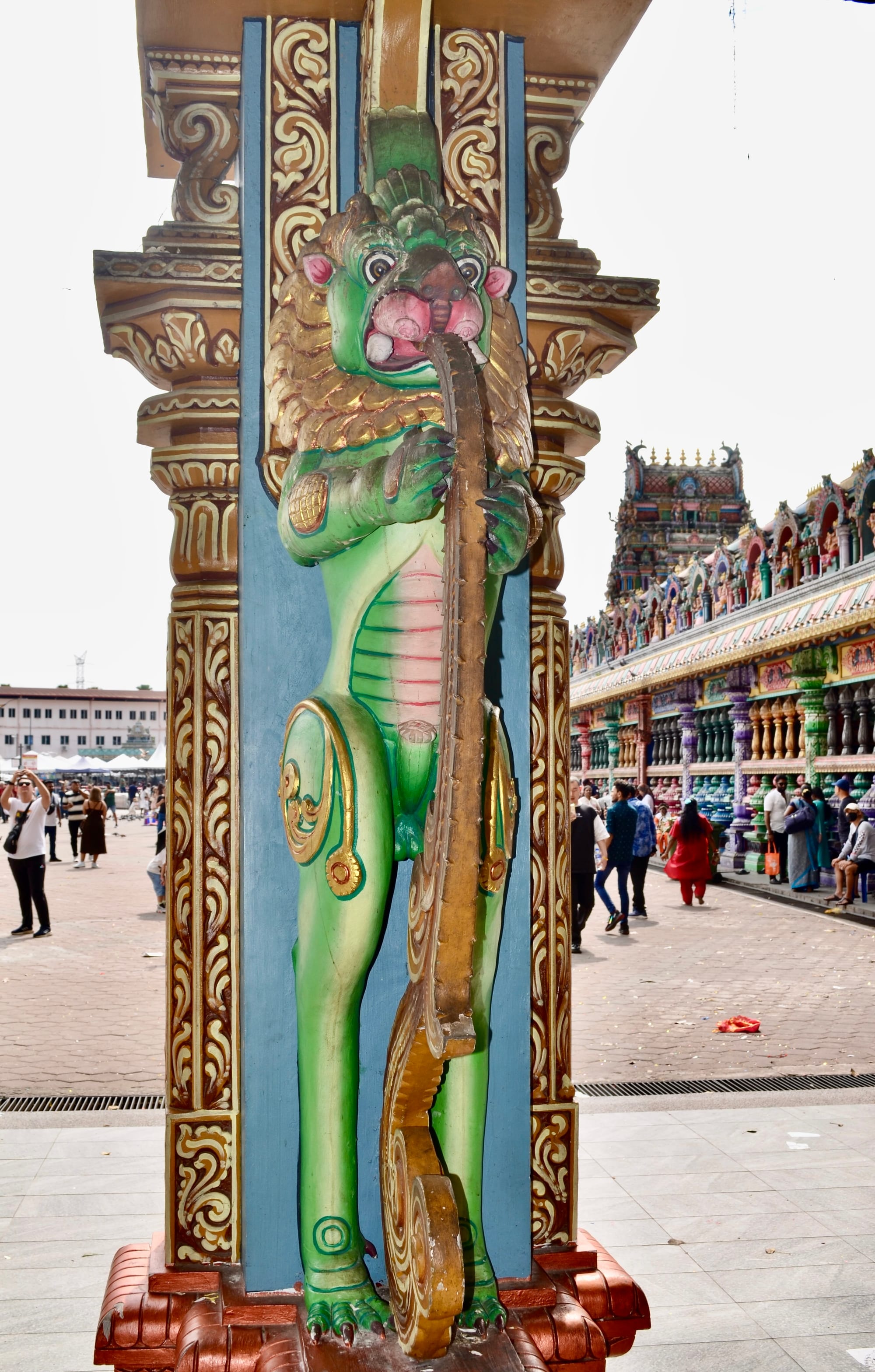
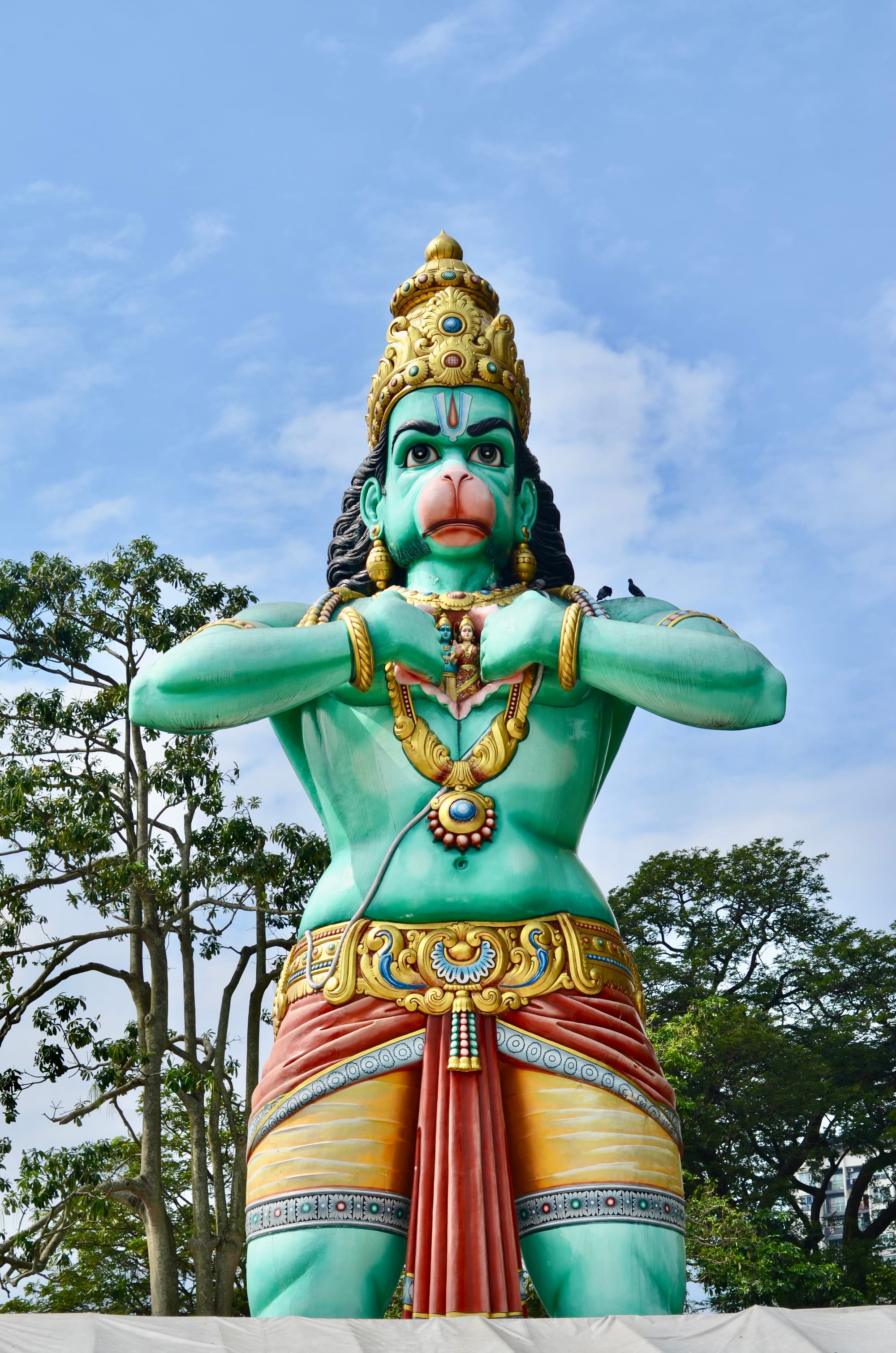
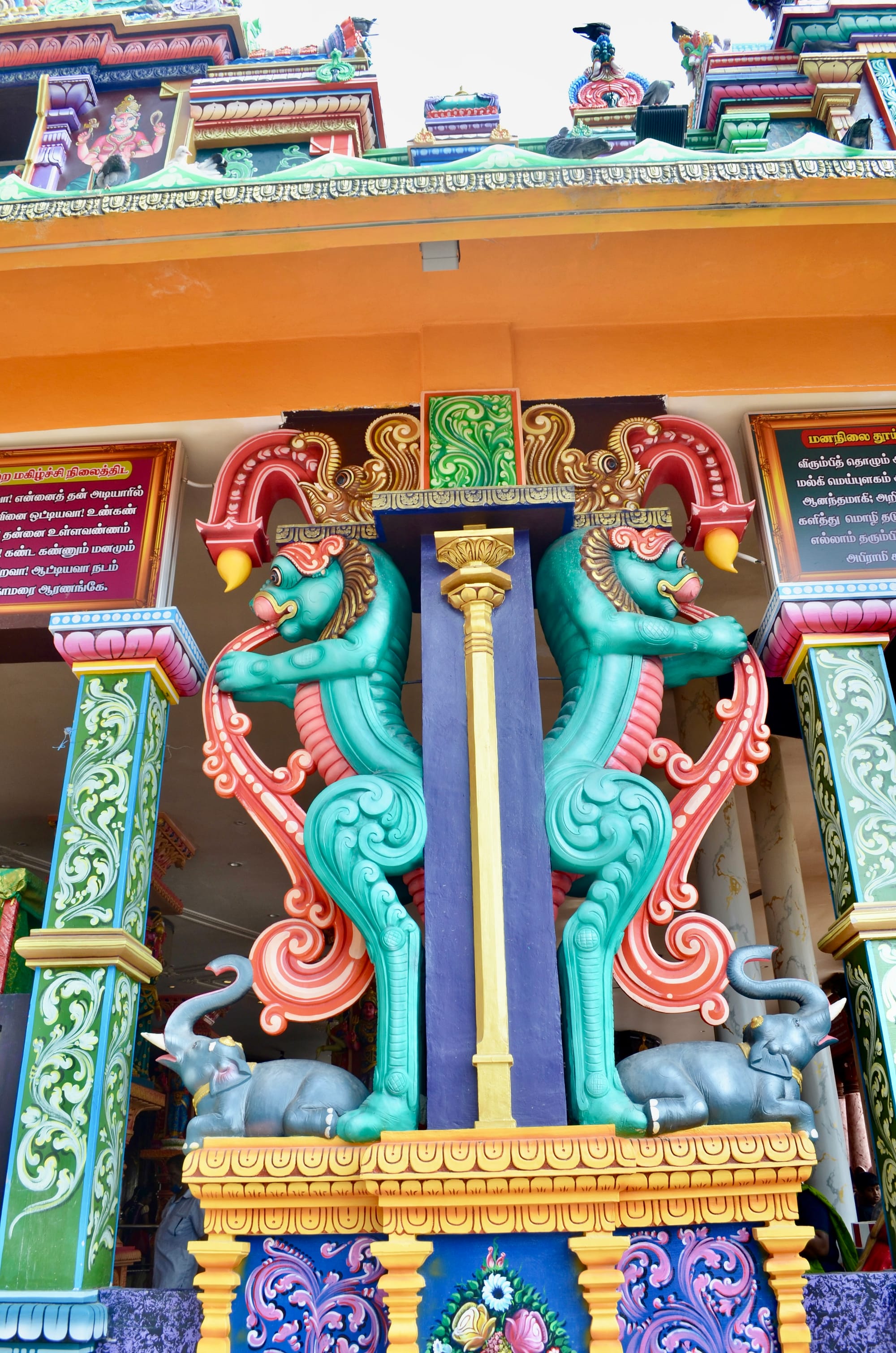
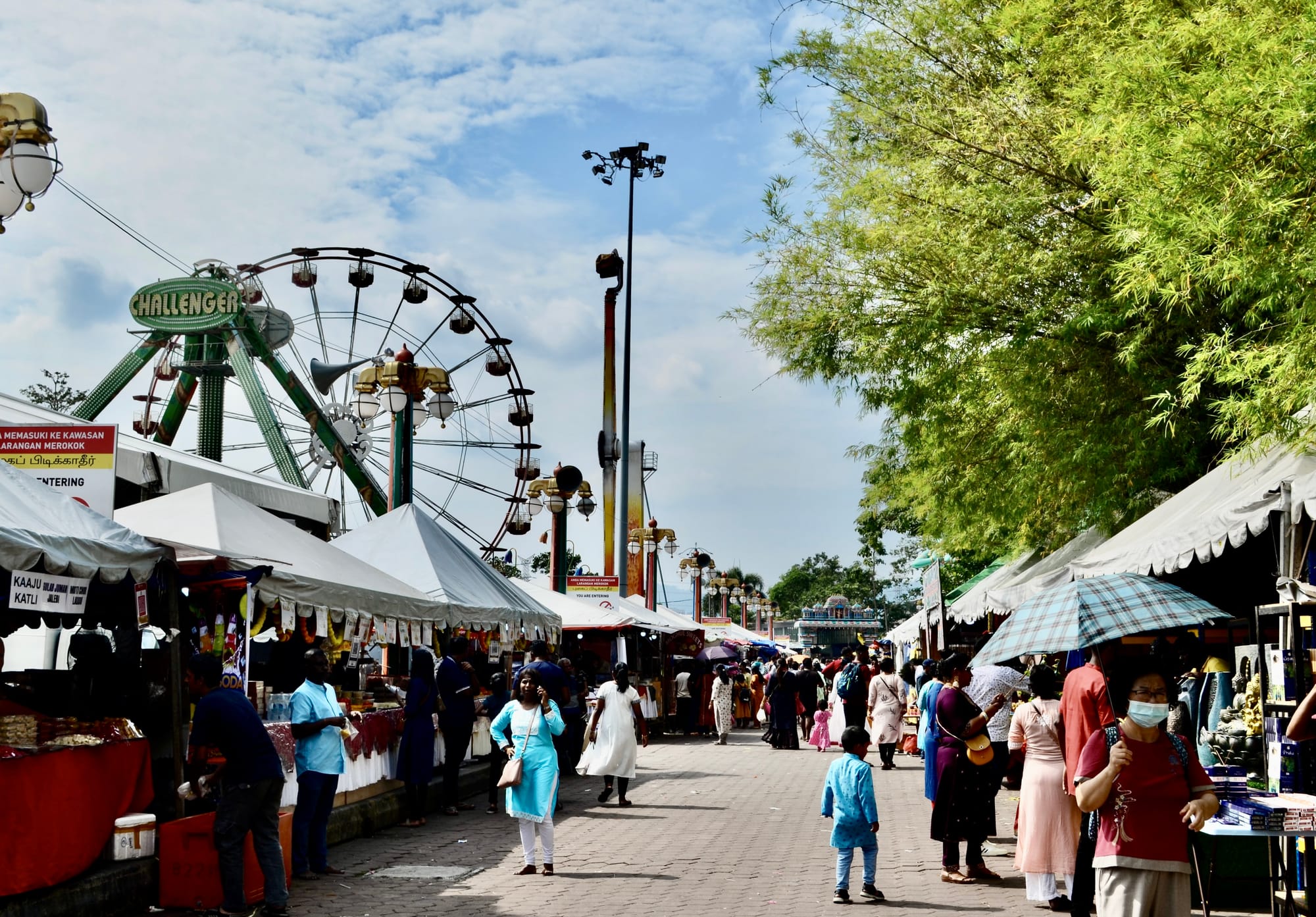
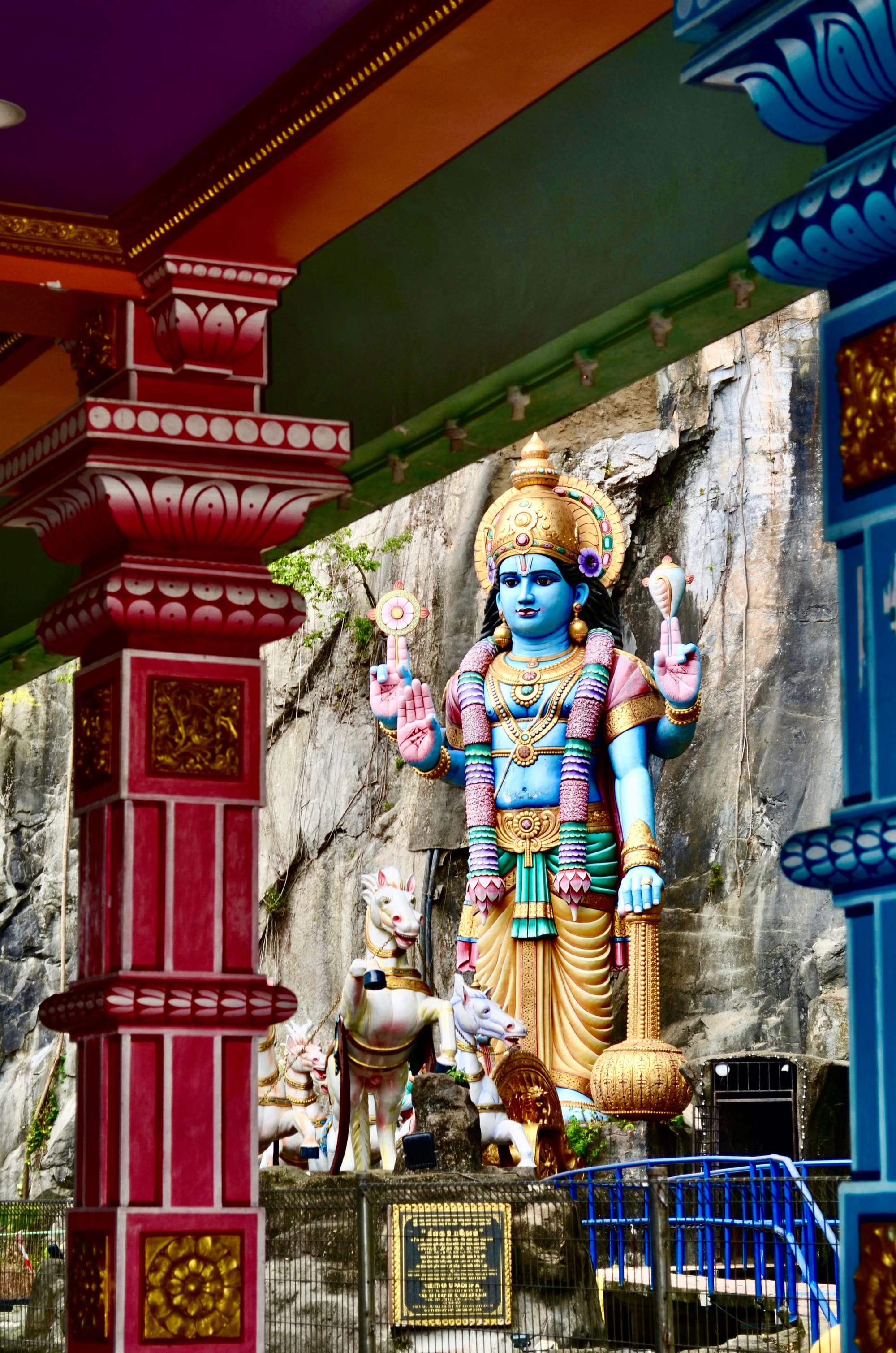
The lively colors infuse the entirety of the space and create a feeling of elation despite the heat and humidity. (photos by kjd, January 2024)
